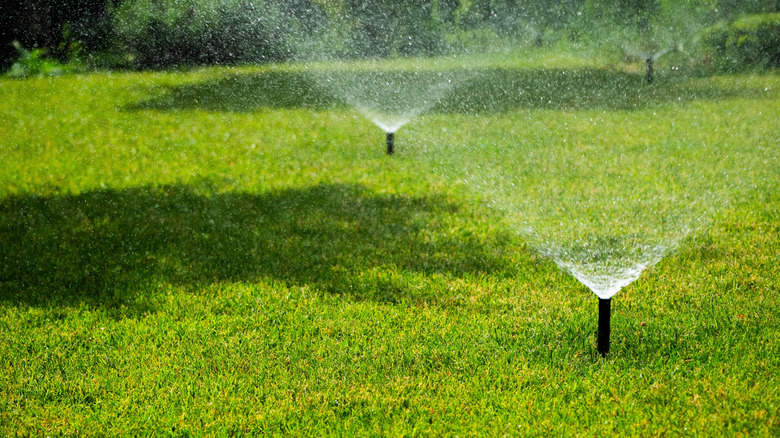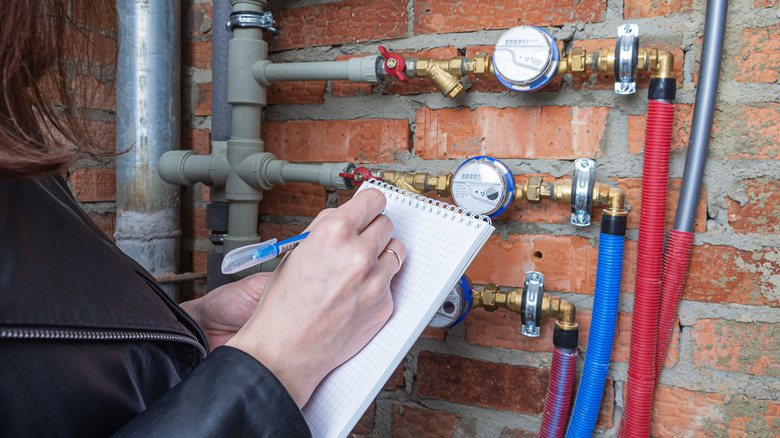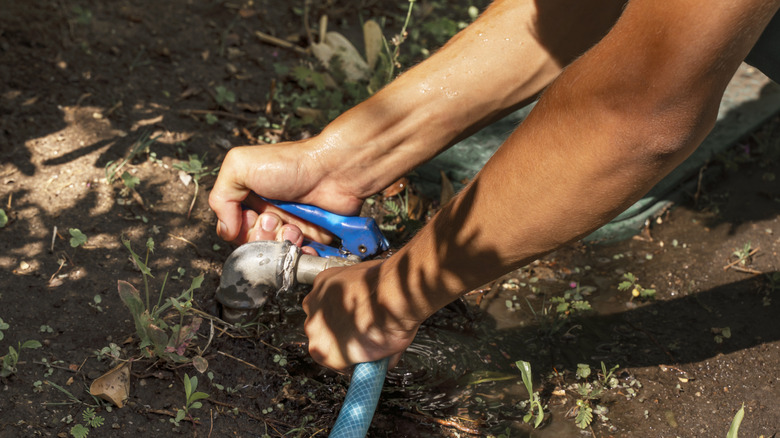How Difficult Is It To DIY A Sprinkler System Kit For Your Lawn?
To help their lawns thrive, and to avoid mistakes everyone makes when watering their lawn, many homeowners choose to install sprinkler systems. These systems work by dispensing the perfect amount of water to keep a yard healthy according to its specific size, layout, and type of grass. Skilled professionals can set these up, but even though it's not necessarily an easy project, it is possible even for beginner DIYers with a sprinkler system kit.
Proper preparation helps make the installation process easier, and that begins before you actually do any physical work. You'll need to know more than just your yard's square footage. Gauging your home's water pressure, water flow, and water meter size are important steps to configuring the right system. Depending where you live, you also might need to acquire a permit. Once you get those details squared away, you'll be ready to begin building and installing your sprinkler kit. The intensity of the process varies, with smaller yards being typically easier to irrigate and larger spaces requiring more in-depth systems.
Although a sprinkler installation might be more strenuous than other projects, opting to DIY your system can come with some notable wellness benefits since DIY is good for your physical and mental health. You'll also feel the benefits in your pocket. The average cost of professional sprinkler installation ranges from 28 to 47 cents per square foot, which means that covering a 3,000-square-foot yard might cost up to $1,410, while DIY sprinkler system kits can cost less than $300 to cover the same area.
Creating an effective plan
You can't improvise your way to a successful sprinkler installation. It takes an understanding of your home's utilities, your yard's needs, and the materials best suited for your project. Fortunately, most of this information is relatively straightforward to gather, and you can recruit some online tools to help you.
First, you'll map out your yard to identify the zones in which you'll eventually place your sprinkler heads with different types of nozzles to create a space where each area of your lawn is sufficiently watered. To make that measuring process easier, Google Maps can help you get a broad view of your space. You'll also need to take some utility measurements to determine how many zones you need. That requires calculating your water meter size, service line size, water pressure, and flow rate. For those who aren't math-minded, that can seem like a lot of brainpower, but online resources and calculators exist to help you find the right equations.
From there, you're also going to need to select and purchase some a sprinkler system kit. Factors like how many zones you're setting up and whether you're running your system above or underground are key considerations to finding the right gear. With that knowledge, you'll be able to find a kit that fits your needs. And, provided you've looked into permits, you'll be ready to start your installation.
Steps to a successful installation
It doesn't take a plumber or professional contractor to bring the plan you've developed to life, but it does take time and energy. In many cases, it requires multiple days. So, prepare to dedicate a full weekend to the task. Though it's not required, this can be the perfect excuse to dial up any handyman friends — and maybe even promise them pizza with the money you save, which will certainly more than enough for a treat or two at the end of a long workday.
One of the first things for a DIYer to do is dig trenches to lay PVC pipes in that will carry the water to the sprinklers. In most cases, these trenches need to be about 6 to 8 inches deep, but that's just the beginning. You'll then need to assemble the system, following the specific instructions from your kit. When installing, you'll need to rely on the mapping and measurements you did earlier to understand where the water should move and how your utilities will help it do so. Having already done that planning to prepare your lawn for in-ground sprinkler installation will make the actual assembly process much easier. And though that can feel like a heavy lift, don't lose faith. If you're up for a few days of labor, you'll see rewards at the end of it all: a thriving lawn, a sense of pride, and a heavier wallet.


